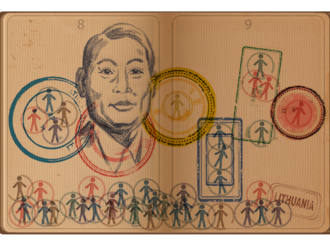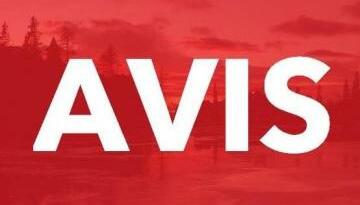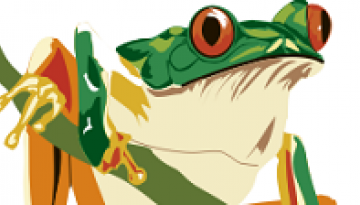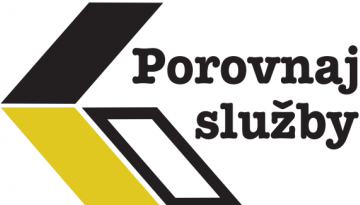Monitorujeme 1695 zdrojov

 Google Dooles 28.07.2019 18:41
Date: July 29, 2019
“There was no other way,” said Japanese diplomat Chiune Sugihara, who was stationed in Lithuania shortly before the outbreak of World War II. On this day in 1939, Sugihara began issuing transit visas to thousands of Jewish refugees, defying direct orders from his supervisors to help the refugees escape via Japan.
“I told the Ministry of Foreign Affairs it was a matter of humanity,” he recalled years later. “I did not care if I lost my job.”
Soon after Jewish families began lining up outside his official residence, pleading for documents to allow them safe passage via Japan to the Dutch island of Curacao, he sent three messages to Tokyo requesting permission, all of which was forcefully rejected. “Absolutely not to be issued any traveler not holding firm end visa with guaranteed departure ex Japan,” read the cable from the foreign ministry. “No exceptions.”
After much soul-searching, Sugihara threw caution to the winds, writing thousands of visas night and day until “my fingers were calloused and every joint from my wrist to my shoulder ached.” His wife supported his risky decision, massaging his tired hands each night so he could keep going until the last minutes of his train leaving Lithuania, handing out visas to Jews from the windows.
Upon returning to Japan, Sugihara paid the price for disobeying orders. His promising foreign service career came to an end, and he struggled to support his family. He received little recognition for his sacrifice until one of the people he saved, now an Israeli diplomat, managed to find him in 1968. A tree was planted in his honor at the Holocaust Memorial in Jerusalem, and Chiune Sugihara was declared "Righteous Among Nations." Memorials in Lithuania and his hometown of Yaotsu, Japan pay tribute to Sugihara and his heroic endeavors that saved untold thousands of lives.
Doodler Up Close
Today’s Doodle was created by Doodler . Below, he shares some thoughts on Chiune Sugihara and the inspiration for this Doodle:
Q: Chiune Sugihara was both a diplomat and a rebel. What part of his character did you find most inspiring personally?
A: His bravery. He trusted his instincts to fundamentally help people no matter where they’re from or who they are.
Q: How did you decide to render his Doodle as a passport?
A: It seemed the most logical. Passports are quite beautiful things when you look at them closely—for instance, passport stamps are uniquely graphic and readable. Do we even stamp passports anymore?!
Q: Your early draft shows a pencil sketch of Chiune—is that your preferred medium? Did you do anything different on this Doodle from a technical standpoint?
A: I use of lot of different mediums, but I somehow forget how subtle and versatile a basic pencil can be! Coincidentally, I was traveling during this project, and having no access to the computer gave me this pencil opportunity. It somehow captures his dignity.
Q: At what point in your life did you know that you loved the visual arts? Was there a particular artist or teacher who inspired you to develop your talents?
A: I’m just one of the millions of people that drew as a kid. I just stubbornly never gave up. I have too many inspirational artists to mention, but Peter Parr was my art tutor in England and Oscar Grillo, an Argentinian artist living in London, constantly inspires me.
Q: What advice or encouragement would you give to fellow artists who may be approaching a project like this, where the challenge is to represent a little-known historical figure with a big story using a single image?
A: Great question. I would say always start with small concept sketches on scrap paper. There’s no pressure. Working small eliminates details you don’t need. Try to depict people in as simple lines and shapes as possible. In terms of drawing in general, sketching and studying people in real life loosens you up and heightens your skillset.
Q: Why do you think it’s important to bring stories like Chiune Sugihara’s to a wide audience?
A: Sugihara spent 18-20 hours a day processing visas in order to save people. Anybody who worked so hard with such sacrifice deserves to be seen by as many people as possible.
Early pencil sketch and drafts of the Doodle
Location:
,
,
,
,
,
,
,
,
,
,
,
,
,
Tags:
Google Dooles 28.07.2019 18:41
Date: July 29, 2019
“There was no other way,” said Japanese diplomat Chiune Sugihara, who was stationed in Lithuania shortly before the outbreak of World War II. On this day in 1939, Sugihara began issuing transit visas to thousands of Jewish refugees, defying direct orders from his supervisors to help the refugees escape via Japan.
“I told the Ministry of Foreign Affairs it was a matter of humanity,” he recalled years later. “I did not care if I lost my job.”
Soon after Jewish families began lining up outside his official residence, pleading for documents to allow them safe passage via Japan to the Dutch island of Curacao, he sent three messages to Tokyo requesting permission, all of which was forcefully rejected. “Absolutely not to be issued any traveler not holding firm end visa with guaranteed departure ex Japan,” read the cable from the foreign ministry. “No exceptions.”
After much soul-searching, Sugihara threw caution to the winds, writing thousands of visas night and day until “my fingers were calloused and every joint from my wrist to my shoulder ached.” His wife supported his risky decision, massaging his tired hands each night so he could keep going until the last minutes of his train leaving Lithuania, handing out visas to Jews from the windows.
Upon returning to Japan, Sugihara paid the price for disobeying orders. His promising foreign service career came to an end, and he struggled to support his family. He received little recognition for his sacrifice until one of the people he saved, now an Israeli diplomat, managed to find him in 1968. A tree was planted in his honor at the Holocaust Memorial in Jerusalem, and Chiune Sugihara was declared "Righteous Among Nations." Memorials in Lithuania and his hometown of Yaotsu, Japan pay tribute to Sugihara and his heroic endeavors that saved untold thousands of lives.
Doodler Up Close
Today’s Doodle was created by Doodler . Below, he shares some thoughts on Chiune Sugihara and the inspiration for this Doodle:
Q: Chiune Sugihara was both a diplomat and a rebel. What part of his character did you find most inspiring personally?
A: His bravery. He trusted his instincts to fundamentally help people no matter where they’re from or who they are.
Q: How did you decide to render his Doodle as a passport?
A: It seemed the most logical. Passports are quite beautiful things when you look at them closely—for instance, passport stamps are uniquely graphic and readable. Do we even stamp passports anymore?!
Q: Your early draft shows a pencil sketch of Chiune—is that your preferred medium? Did you do anything different on this Doodle from a technical standpoint?
A: I use of lot of different mediums, but I somehow forget how subtle and versatile a basic pencil can be! Coincidentally, I was traveling during this project, and having no access to the computer gave me this pencil opportunity. It somehow captures his dignity.
Q: At what point in your life did you know that you loved the visual arts? Was there a particular artist or teacher who inspired you to develop your talents?
A: I’m just one of the millions of people that drew as a kid. I just stubbornly never gave up. I have too many inspirational artists to mention, but Peter Parr was my art tutor in England and Oscar Grillo, an Argentinian artist living in London, constantly inspires me.
Q: What advice or encouragement would you give to fellow artists who may be approaching a project like this, where the challenge is to represent a little-known historical figure with a big story using a single image?
A: Great question. I would say always start with small concept sketches on scrap paper. There’s no pressure. Working small eliminates details you don’t need. Try to depict people in as simple lines and shapes as possible. In terms of drawing in general, sketching and studying people in real life loosens you up and heightens your skillset.
Q: Why do you think it’s important to bring stories like Chiune Sugihara’s to a wide audience?
A: Sugihara spent 18-20 hours a day processing visas in order to save people. Anybody who worked so hard with such sacrifice deserves to be seen by as many people as possible.
Early pencil sketch and drafts of the Doodle
Location:
,
,
,
,
,
,
,
,
,
,
,
,
,
Tags:
NEWS.SK odporúča
Nie sú nájdené žiadne články.
Nie sú nájdené žiadne články.




















